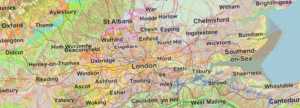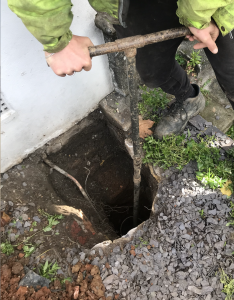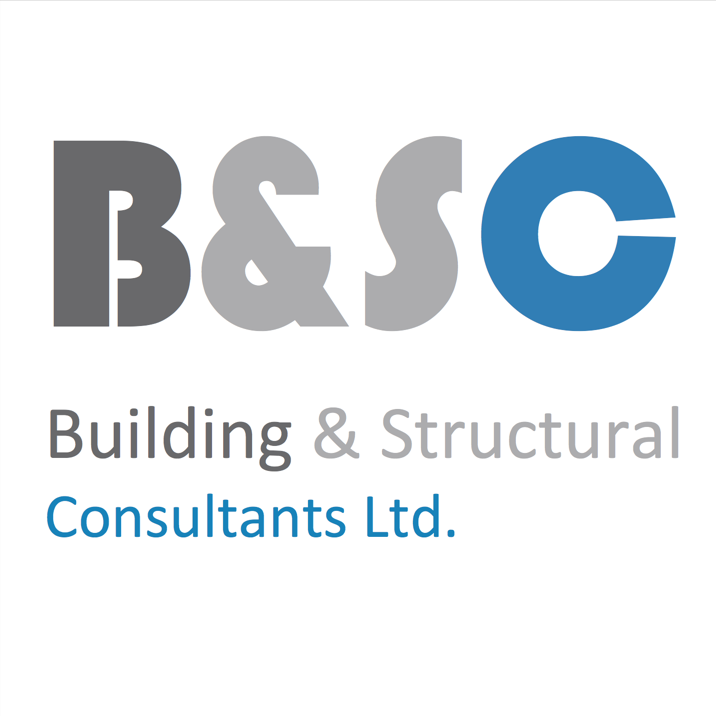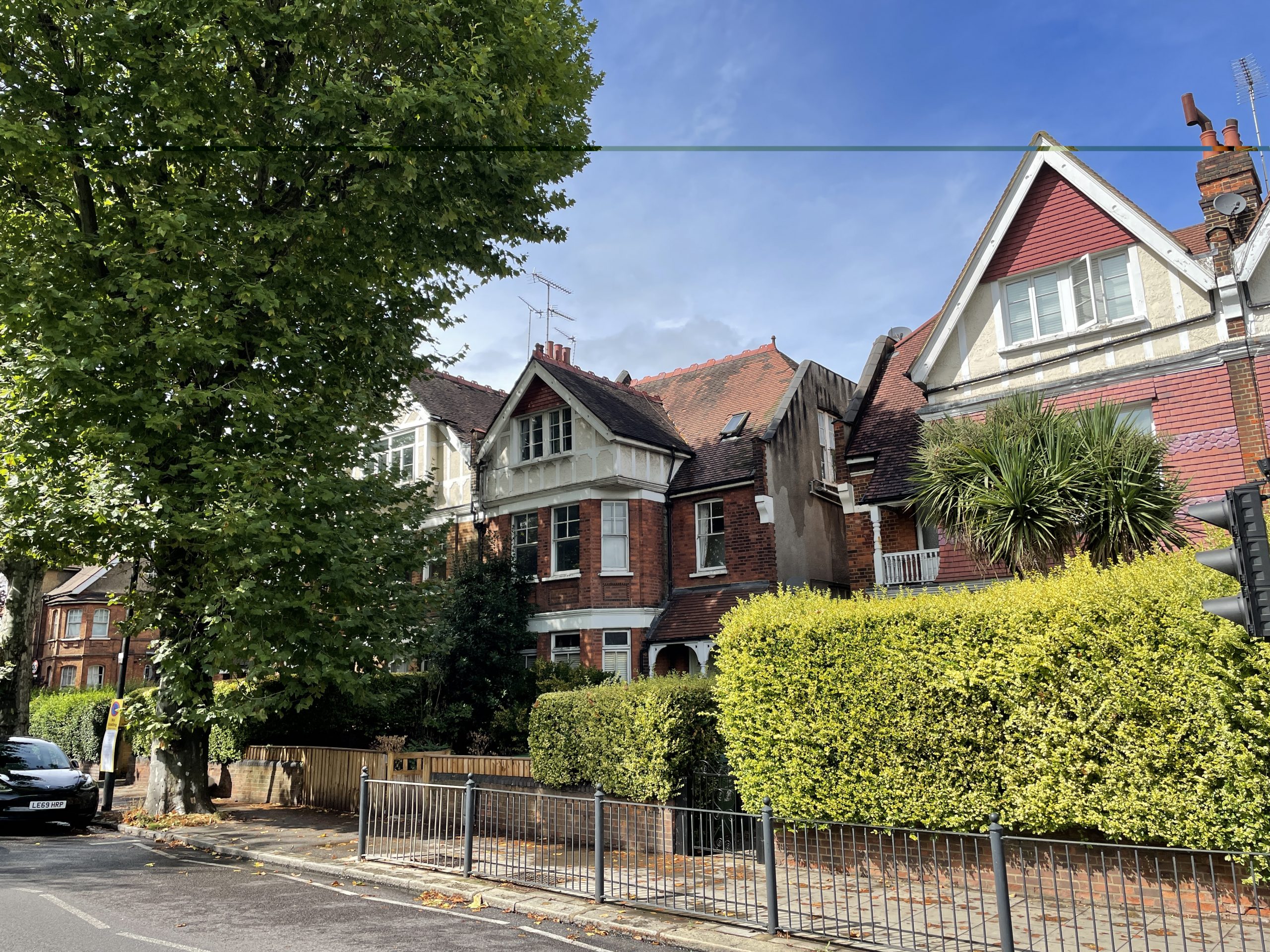The UK’s clay subsidence industry was born in the 1970s, matured in the 1980s and fuelled by global-warming has since grown to become a huge behemoth which already costs the insurance industry millions every year – predicted by PwC to increase by 800% and cost £1.9 billion per year in the not too distant future, if climate change continues.
Something has to change soon – and it can;
Avoidance & Prevention
The overwhelming majority of subsidence insurance claims are due to clay shrinkage from roots growing beneath foundations in shrinkable clay. If the roots were not there the problem would not be either. But people love to live in close proximity to plants and trees, which of course have a huge environmental benefit to us all. If we could just all ensure that where our buildings are on shrinkable clay, the trees can’t grow underneath them then we would not have such a problem.



Effective vegetation management is one way of dealing with it, but we are just not doing that enough. Most of us don’t get subsidence, and many of us never will. We have trees near our houses and no signs of structural movement so far, so we believe we are likely not at risk. Why take the irreversible step of cutting down a beautiful tree just because it might cause a problem? It might not ever do so. Even when we know we are on clay, not having any cracks is a strong incentive to do nothing – tackle the problem if and when it occurs is the common way of thinking.
But there are a host of reasons why we would be much better off preventing the thing happening in the first place;
- Subsidence investigations alone are expensive, and claiming can be a long drawn out and frustrating experience
- Once you’ve had subsidence it must be disclosed to insurers, lenders and buyers – which can adversely affect premiums, saleability and property value
- Failure to put a third party tree owner on proper notice of risk (backed by technical evidence) can allow them to avoid liability in the event their tree does damage your property
- Allowing subsidence to happen fuels the behemoth and keeps all our insurance premiums higher than they need be

What most of us don’t really appreciate is that there are subtle reasons why subsidence damage might occur to one house but not to the adjacent one – when they are both equidistant from a tree, or occur one year but not another. Differences in soil make-up (particularly clay content and shrinkability) from one part of a site to another, root systems extending in unpredictable patterns, rainfall / heat patterns, climate change – these all play a part. Houses with good block rigidity can resist subsidence damage – but only up to a point, when they start to fail. Some of the above factors change unpredictably, so a house which has remained stable for decades can begin to move without there being any clear warning.
Insurers are already encouraging home-owners (in very general terms) to be judicious in managing vegetation close to properties, but without specific tailored & personal advice from an appropriate expert who has seen the site, most of us are too willing to take the easy way out and do nothing, or just not enough.
To persuade people to take effective action, the first important thing to establish is soil susceptibility. There are geo maps available online which give a guide to this (such as those produced by the British Geological Survey), and A.I. models geared to risk analysis. In many cases they are quite accurate – but not all cases. And in some cases they are unavoidably way off the mark as superficial deposits on top of the bedrock are unpredictable.

There is no substitute for a small excavation on the site in question (down to natural subsoil depth – usually within the top 0.5m) to check the natural subsoil beneath the topsoil. In some scenarios, it would be sensible also to excavate a deeper (3m) borehole to check for varying soil types within the root zone of trees.

Excavating a 3m borehole

Clay sample in the head of a hand auger
Many homeowners can dig a shallow pit themselves, but it is better to get someone with geological knowledge and experience to look at the natural subsoil, and assess it for vulnerability to subsidence. A Subsidence Consultant can do this (these are usually Structural Engineers, Building Surveyors or other relevant professionals – specifically with much subsidence experience). Subsidence Consultants often have their own extensive records of past site investigations they have undertaken in the locality – so a site excavation might not even be necessary.
If you are not on a high-risk subsoil then you can rest easy as trees don’t cause subsidence on non-shrinkable soils – and pose a much lower risk on low-shrinkability clay soils. If you are on a vulnerable subsoil though, your Subsidence Consultant can then give you an idea of the risk in your specific case. They would consider other matters as well such as;
- Likely foundation type and depth (to the house and later extensions)
- Topography
- Underlying geology and watercourses
- Water demand of nearby trees – and water sources
- Soil susceptibility
- Building rigidity / flexibility
With this information it should be possible to carry out enough vegetation management to reduce the subsidence risk, but without excessive removal of important or attractive vegetation. In some cases, trees could be re-planted or replaced at a safer distance. An arboriculturist can assist in preparing a garden management plan.
In cases where it is not possible to remove a tree which is posing a threat, then other measures could be considered such as root barriers or innovative new methods such as geopolymer resin-injection to reduce the soil susceptibility beneath the foundations where the roots could grow.
The global climatic effects of loss of an individual tree can be measured and equalised by various forms of carbon-offsetting (tree-planting elsewhere, carbon capture etc.).
Changing mindsets
It is interesting to note that the UK is unique in how we view clay subsidence. It happens everywhere in the world, but the UK has an industry dedicated to it. Other countries are not as concerned as we are about it and properties with minor cracks change hands more easily. This is because subsidence insurance is not essential in many other countries, and subsidence has much less of an effect on property values. Our friends overseas are generally much more relaxed about it – as we ourselves were before the introduction of subsidence insurance in the 1970s. In many countries subsidence insurance is not even available, but in others it is a bolt-on addition which some people choose to pay extra for. In some countries the cover only applies when the state declares a regional disaster event, and is funded by the state.
It is through the UK’s introduction of full and permanent private sector subsidence insurance that a public perception has arisen that subsidence damage is something to be feared. However clay shrinkage subsidence is rarely serious in structural terms, and is usually curable simply by vegetation control. There are always exceptional cases of course, and there are other causes of subsidence (such as mining collapse and sinkholes) which can be sudden, dramatic and very serious indeed – but these are fortunately extremely rare.
We have reached the stage now where some of us will not tolerate any form of cracking in their homes and immediately reach for their insurance policy when they see the slightest crack. Just the cost of investigating a subsidence claim can run into thousands, sometimes exceeding the cost of building repairs.
We need a sea-change in the UK’s public perception of subsidence. We should become more like the rest of the world in our attitude towards it and our tolerance of minor cracking in our houses. If we were, property values would be less affected by it, and perhaps subsidence cover could become an optional extra which is not necessary in order to obtain a mortgage. If the general public were dealing with their own repairs without insurance, and their property values were not significantly impacted by it, they would probably be a lot more tolerant of a few structurally unimportant cracks occurring in hot summers. Those who were more concerned could seek advice and get appropriate measures taken to prevent it recurring.
Optional clay subsidence cover?
Perhaps for insurance, clay shrinkage should be treated separately from other forms of subsidence, heave and landslip, by excluding subsidence due to clay shrinkage in the standard peril, and offering it as an optional extra instead. It makes sense to differentiate between unforeseeable ground problems which can affect properties in most different soil types all over the UK, and those more foreseeable problems which only affect people on shrinkable clay with trees nearby – who can in most cases do something to reduce the risk if they choose.
This optional extra cover might be expensive but could perhaps be discounted for those who have obtained a professional risk assessment report and followed advice given to reduce the risk – thus proving they are at lower risk. Such risk assessments could be reviewed every 5-10 years at little cost, to ensure that vegetation is under control and in line with previous recommendations, and changing climatic conditions.
With such a system in place, people on non-shrinkable soils can stop paying for those on clay, and those on clay are more likely to appreciate the cost of leaving a risk tree in place, and take preventative action (whether they’ve paid the extra premium or not) in their gardens.
Bob Gibson – Subsidence Consultant (Structural Engineer & Building Surveyor)
B&SC Subsidence Consultants


